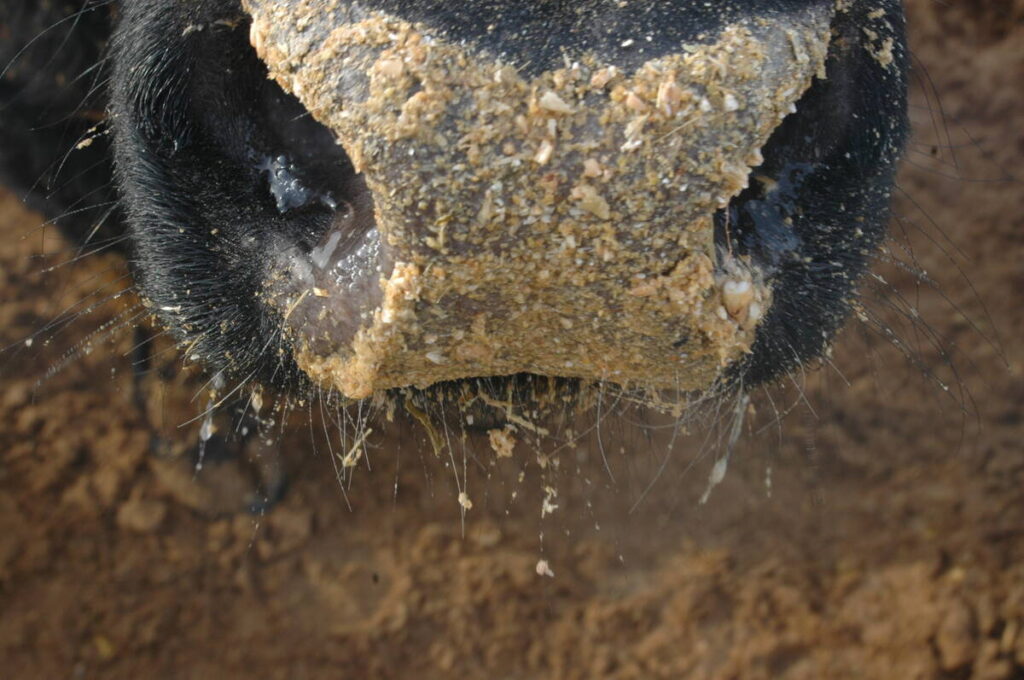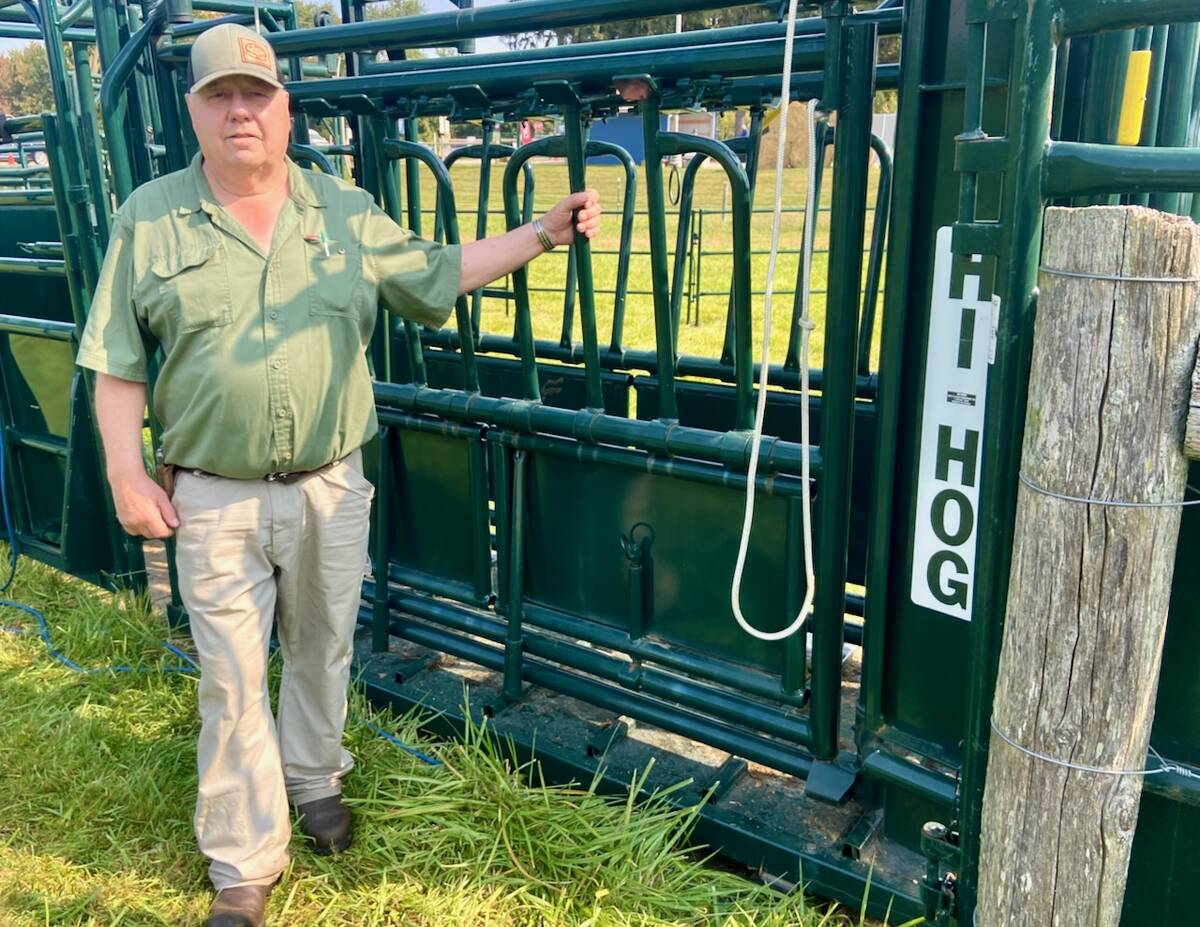Drought drives stored feed, byproduct use in cow-calf herds

The lingering drought in parts of the Prairies is changing the way some beef producers feed their cows.
More producers have had to feed alternatives, with dried-up grasslands and poor-performing hay ground creating shortfalls in feed. They’ve used more mixing equipment to create a palatable ration.
The 2024 growing season was a big improvement in many areas from the previous few years, but there’s still a lack of moisture, says Maddy Lazurko, a beef nutritionist with BeefSmart Consulting based in Saskatoon.
Read Also


Handling equipment can calm cattle
There’s consensus that keeping cattle calmer during handling reduces the stress for the animals and the people managing them.
“I think that we’ve learned how versatile beef cattle can be in what we can feed them,” she says.
Cow-calf operators are depending more on stored feed and byproducts to keep their cattle healthy, especially with the high value of beef cattle, say nutritionists.
That means more byproducts are being used such as dried distillers grains with solubles (DDGS), oat hulls and screenings from other grains. It also means more use of precision mixing, whether that’s starting with bale grinding or total mixed ration (TMR) mixers.
Once farmers have invested in the equipment, as many did during the drought to make use of available byproducts, they keep using it, says Kurtis Reid, sales manager for Masterfeeds in Saskatchewan and whose family operates the oldest purebred Hereford herd in Canada.
The benefit of a better mix is feed efficiency and feed conversion, says Reid.
The use of TMR mixers is a long trend, says John Maltman, ruminant nutritionist with Highline Manufacturing, the Saskatchewan-based manufacturer of hay processing and feed mixing equipment.
“Typically, a change in technology is not based on a transient event. Drought comes and goes,” he says.
He more attributes it in the beef cow-calf sector to the growth in stored feed — drought or no drought.
“We’re seeing silage come back and that’s the primary reason why guys are moving to mixers.”
He says many cow-calf producers start out with a bale processor to better manage feed and eventually move to a total mixed ration mixer. That especially happens when they want to make the most efficient use of minerals and other additives.
It also helps when less edible commodities are put into the ration, as was necessary when feed was scarce in the past few years.
“People have been using a lot of byproducts, like DDGS or screenings or even things like kochia,” says Lazurko.
Some have been using a partially mixed ration to get the byproducts into a form that cows will eat.
Some products that producers have used are proving to be mainstays in the diet.
“Things like oat hulls have gotten pretty affordable prices, and I think will become part of the program going forward, just because they’re so versatile and they’re like a nice fibre that’s not quite as indigestible as straw,” she says.
She also says that more silage is made because it offers high-quality feed, even if the stand isn’t that great.
DDGS is also now a mainstay, when it’s available, because it is a global commodity.
Reid says that ethanol production has slowed in North America, which means less DDGS are available. About seven per cent of American exports of DDGS are sent to Canada, according to the U.S. Department of Agriculture.
Ethanol mills have increased the amount of ethanol and corn oil they get out of a bushel of corn, which reduces the amount of DDGS. In the past 10 years, the yield of DDGS has declined about 15 per cent, according to Scott Irwin, an economist at the University of Illinois.
Most farmers work with a broker, and there are now more brokerage options for producers, including some feed companies such as Masterfeeds.
“Producers still like to use byproducts. They were just slightly more difficult to get your hands on last year,” he says.
Grain screenings have also become a commodity, and Reid says some countries will take dirtier grain because it means it can be cleaned and the screenings used to feed animals.
Despite the feed management lessons learned across the Prairies over the past few years, there’s money to pay for feed alternatives at the moment.
“When cattle markets are really good and money is being invested, it’s a different outlook and news cycle dominance, because we are in very fortunate times,” says Reid.
Source: producer.com


